Produce Pesticide

Is organic food healthier than non-organic food ?
The debate over whether organic food is healthier than non-organic food has been ongoing for decades. While some argue that organic food offers more nutritional benefits and is better for the environment, others believe that the differences are negligible and that non-organic food can be just as healthy. In this article, we will explore both sides of the argument and try to answer the question: is organic food healthier than non-organic food? Arguments in favor of organic food include nutritional benefits, pesticide reduction, and environmental impact. Organic farming practices focus on building healthy soil and growing strong plants, which results in produce that is richer in nutrients like vitamins, minerals, and antioxidants. Additionally, organic food is grown without the use of synthetic pesticides and fertilizers, reducing the risk of harmful chemicals ending up in our food supply. Finally, organic farming practices promote biodiversity, reduce pollution, and help preserve natural resources. Arguments against organic food include minimal nutritional differences, low pesticide residues, and higher cost. While some studies have found that organic food is more nutritious than non-organic food, other research suggests that the differences are minimal. The levels of pesticides found in non-organic produce are generally well below what is considered safe by regulatory agencies, and washing produce thoroughly can further reduce pesticide residues. However, one of the biggest drawbacks of organic food is its higher cost compared to non-organic options. Ultimately, the decision of whether to choose organic or non-organic food depends on personal preference and individual circumstances. If you prioritize nutrition, reducing your exposure to pesticides, and supporting environmentally friendly farming practices, then organic food may be the way to go. However, if you are concerned about cost or believe that the nutritional differences between organic and non-organic food are minimal, then non-organic options may be suitable for you.

How do I read and understand organic food labels ?
Organic food labels can be confusing, but understandingOrganic food labels can be confusing, but understanding informed decisions about what you eat This certification ensures that the product has been grown and processed according to strict federal guidelines. 2. Check the List of Ingredients: Look for words like "organic," "made with organic ingredients," or "100% organic." These phrases indicate that the product has been made with organic ingredients. 3. Watch Out for Marketing Terms: Be wary of terms like "natural," "free-range," or "cage-free." Always look for the USDA Organic seal or other certifications that ensure the product meets specific standards. 4. Consider the Pesticide Residue: Even if a product is labeled as organic, there may still be some pesticide residue present. Look for products that are certified as "pesticide-free" or "certified organic." 5. Check for GMOs: Genetically modified organisms (GMOs) are not allowed in organic products. Make sure the product is labeled as "non-GMO" or "certified organic." 6. Read the Nutrition Facts Panel: Don't forget to read the nutrition facts panel on the back of the package. This will give you information about the product's calorie content, fat content, and other nutrients. Choose wisely based on your dietary needs and preferences.

Are organic foods healthier than non-organic options ?
The debate over whether organic foods are healthier than non-organic options has been ongoing for decades. Proponents of organic food argue that it is better for our health due to the absence of synthetic pesticides and fertilizers, while critics contend that there is no significant difference in nutritional value between the two types of food. In this article, we explore both sides of the argument and examine the evidence to determine if organic foods are indeed healthier than their non-organic counterparts. Arguments in favor of organic foods include the lack of synthetic pesticides or fertilizers, higher nutrient content, and fewer antibiotics and hormones. However, arguments against organic foods suggest similar nutritional value, concerns about pesticide residue, and potential negative environmental impacts. Ultimately, the decision to choose organic or non-organic foods should be based on individual preferences and priorities, as well as an assessment of the available evidence regarding the health and environmental impacts of each choice.

Can sportswear companies produce more sustainable products ?
Sportswear companies can produce more sustainable products by using eco-friendly materials, reducing waste, and adopting circular economy principles.

Do hybrid cars produce less pollution than traditional gasoline cars ?
Hybrid cars generally produce less pollution than traditional gasoline cars, but the comparison is not straightforward and various factors must be taken into account.
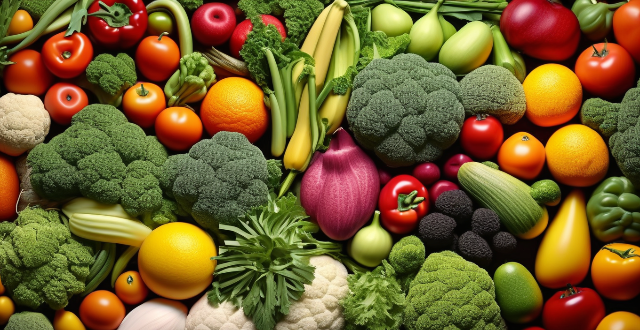
How can I make sure my fruits and vegetables are organic ?
To ensure your fruits and vegetables are organic, buyTo ensure your fruits and vegetables are organic, buy stores, grow your own using avoid contamination by washing produce thoroughly, and educate yourself on the latest research and news about organic farming.

How much energy does a zinc-carbon battery produce ?
The energy production of a zinc-carbon battery is determined by factors such as its size, voltage, and capacity. The process involves a chemical reaction between zinc and manganese dioxide, where larger batteries typically yield higher energy output due to more reacting material. The nominal voltage of a standard zinc-carbon battery stands at 1.5 volts, and the total energy can be calculated by multiplying this voltage with the current over time. Capacity, measured in ampere-hours (Ah), represents the maximum charge a battery can deliver. For instance, an AA-sized zinc-carbon battery with a 0.8 Ah capacity can produce approximately 1.2 watt-hours or 0.0012 kilowatt-hours of energy under ideal conditions.

How do electric cars compare to hybrid cars ?
Electric cars run solely on electricity and produce zero emissions, while hybrid cars combine a gasoline engine with an electric motor for improved fuel efficiency. Electric cars offer environmental benefits and lower operating costs but have limited range and long charging times. Hybrids provide a balance between gasoline-powered vehicles and electric cars, with improved fuel efficiency and no range limitations but still rely on gasoline and produce emissions. The choice between the two often depends on individual needs and preferences.

How can I incorporate seasonal ingredients into my holiday cooking ?
Incorporating seasonal ingredients into your holiday cooking is not only a way to serve the freshest and most flavorful dishes but also supports local farmers and reduces the carbon footprint of your meal. Here are some tips on how to make the most of what's in season: 1. Know Your Seasonal Produce: Research local seasonality and consult seasonal produce guides to find out what fruits and vegetables are in season in your area. 2. Plan Your Menu Around Seasonal Ingredients: Choose one or two seasonal items as the stars of your dish, and build flavor profiles around them. 3. Visit Farmers Markets and CSAs: Support local farmers by shopping at farmers markets or joining a Community Supported Agriculture (CSA) program. Get inspired by the variety of seasonal produce available there. 4. Experiment with New Recipes: Try global cuisines that traditionally use seasonal ingredients, or adapt family favorites by swapping out non-seasonal ingredients for what's currently fresh. 5. Use Seasonal Ingredients Creatively: Swap out sides for in-season vegetables like parsnips, turnips, or sweet potatoes, and garnish with thinly sliced radishes, cucumbers, or even edible flowers for an extra pop of color and freshness. 6. Don't Forget About Meat and Dairy: Choose seasonal proteins like game meats in the fall and winter, and consider seafood that is in season for coastal holiday celebrations. Opt for local dairy products like cheeses which can have seasonal variations in taste and quality. 7. Preserve the Bounty: If you come across a great deal on seasonal produce, consider preserving it through canning, pickling, or freezing to enjoy later in the year.

Can you suggest any food markets that should not be missed when traveling ?
Food markets around the world offer a window into local culture and cuisine. Here are some must-visit food markets: 1\. Boqueria Market, Barcelona, Spain: Known for its fresh produce, seafood, and tapas bars. 2\. Grand Bazaar, Istanbul, Turkey: Offers Turkish delights, spices, and sweets. 3\. La Boqueria, Mexico City, Mexico: A feast for the senses with vibrant colors and aromatic smells. 4\. Kreta Ayer Wet Market, Singapore: Located in Chinatown and known for live seafood and Chinese herbs. 5\. Tsukiji Fish Market, Tokyo, Japan: Renowned for its early morning tuna auctions and seafood. 6\. Mercado de San Miguel, Madrid, Spain: Housed in a historic building with gourmet tapas and wines. 7\. Jemaa el-Fnaa Market, Marrakech, Morocco: A night market surrounded by food stalls offering Moroccan cuisine. 8\. Pike Place Market, Seattle, USA: Known for its fresh produce, artisanal foods, and local crafts. 9\. Queen Victoria Market, Melbourne, Australia: Offers a mix of fresh produce, gourmet foods, and international cuisine. 10\. Or Tor Kor Market, Bangkok, Thailand: Known for its fresh produce, street food, and local ingredients. These markets provide not only delicious food but also a chance to immerse oneself in the local culture.

What are the alternatives to fossil fuels for energy production ?
The article discusses various alternatives to fossil fuels for energy production, including solar energy, wind energy, hydroelectric power, geothermal energy, biomass energy, and nuclear energy. It explains the working principles of each alternative and their advantages and disadvantages. The main advantage of these alternatives is that they produce clean energy with minimal greenhouse gas emissions, reducing the impact on the environment and climate change. However, some of them require significant investment and infrastructure development, while others have safety concerns or limited availability. Overall, the article highlights the potential of these alternatives in providing sustainable and reliable sources of energy for the future.

How do organic foods affect taste and nutrition ?
Organic foods have become increasingly popular due to concerns about health, environment, and sustainability. The article discusses the impact of organic farming on the taste and nutrition of food. It suggests that organic foods may have a richer flavor profile due to slower growth rates and no artificial flavorings. However, studies have shown mixed results regarding the nutrient content of organic versus non-organic foods. While some studies suggest higher levels of certain nutrients in organic produce, others find no significant difference. Additionally, organic farming practices aim to reduce pollution, conserve water, and promote biodiversity, contributing to a healthier planet. Ultimately, personal preference, budget, and individual health goals will play a role in deciding whether to opt for organic options.
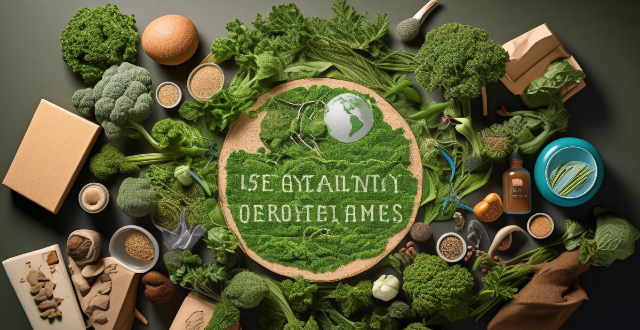
Is it ethical to use genetically modified organisms (GMOs) in agriculture ?
The use of genetically modified organisms (GMOs) in agriculture is a complex and contentious issue that raises ethical questions. Proponents argue that GMOs offer benefits such as increased crop yields, reduced pesticide use, improved nutrient content, and environmental sustainability. Opponents raise concerns about human health risks, economic concentration, environmental impact, and ethical considerations. Key ethical considerations include scientific evidence, public perception, equity and access, environmental stewardship, ethical principles, regulatory oversight, long-term monitoring, global collaboration, innovation and alternatives, and education and awareness.
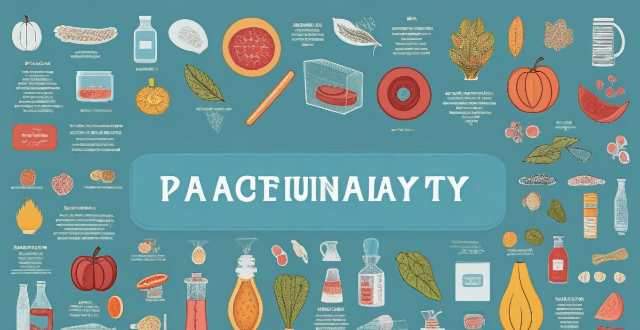
How do agricultural practices influence biodiversity ?
Agricultural practices significantly impact biodiversity, affecting ecosystem services like pollination and soil health. Monoculture reduces biodiversity due to habitat loss and pesticide use, while polyculture enhances it through diverse habitats and reduced chemical inputs. Organic farming benefits biodiversity by avoiding synthetic chemicals and promoting natural pest control, whereas conventional farming can harm it through pesticide toxicity and nutrient runoff. Land management practices like tillage disrupt soil ecosystems, while no-till farming preserves them. Water management also plays a role; sustainable practices like drip irrigation conserve water resources and support aquatic life. Adopting sustainable agricultural methods can help conserve biodiversity while maintaining productive systems.

How has 3D printing technology changed the way we design and produce sports equipment ?
3D printing technology has revolutionized the sports equipment industry by enabling customization, rapid prototyping, complex designs, and on-demand production. This innovation benefits athletes with personalized gear, faster design cycles, optimized performance, and sustainable practices.
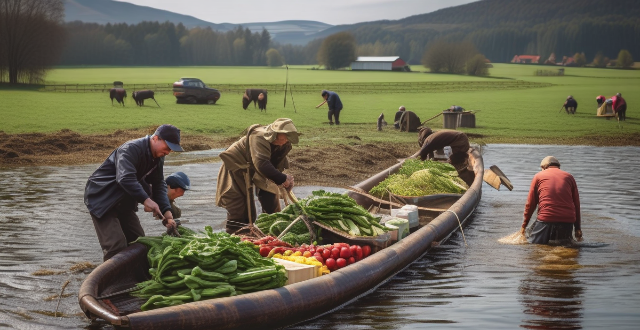
How can we ensure food security in the face of extreme weather events caused by climate change ?
The article discusses strategies for ensuring food security in the face of extreme weather events caused by climate change, including diversifying crop production, improving water management, using climate-resilient crop varieties, adopting sustainable agricultural practices, strengthening early warning systems and disaster risk reduction, supporting smallholder farmers, and promoting policy coherence and international cooperation.

What is the link between climate change, food security, and biodiversity ?
This article discusses the interconnectedness of climate change, food security, and biodiversity, emphasizing their impacts on each other and the need for collective action to address these issues. It defines each topic and outlines how they affect one another, highlighting the importance of sustainable practices in agriculture, conservation efforts, and reductions in greenhouse gas emissions as essential components of a comprehensive strategy to protect our planet's future.
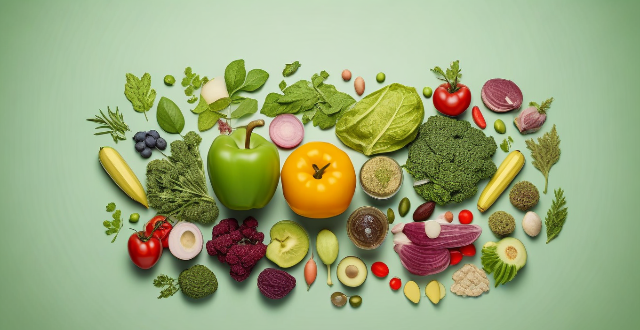
Are organic foods safer than conventionally grown foods ?
The article discusses the pros and cons of organic versus conventionally grown foods, including factors such as pesticide use, nutrient content, cost, availability, and environmental impact. While organic foods offer benefits in terms of reduced exposure to synthetic chemicals and potentially higher nutrient content, they also come with higher costs and limited availability. Conventionally grown foods are often more affordable and widely available but may contain lower levels of certain nutrients and pose potential risks from exposure to synthetic chemicals. The choice between organic and conventional foods ultimately depends on individual preferences and priorities when it comes to health, affordability, and environmental impact.

What measures can be taken to reduce agricultural water consumption ?
Agriculture is the largest consumer of water worldwide, accounting for approximately 70% of global freshwater withdrawals. Reducing agricultural water consumption is crucial for sustainable water management and food security. Here are some measures that can be taken to achieve this goal: 1. **Improved Irrigation Systems** - Drip irrigation delivers water directly to the root zone of plants, reducing waste through evaporation and runoff. - Sprinkler irrigation uses pipes or hoses to spray water over crops, allowing more precise control than surface methods. - Micro-irrigation includes drip tapes and micro-sprayers, which apply water slowly and directly to plant roots. 2. **Water-Saving Technologies** - Soil moisture sensors help farmers determine when and how much to irrigate based on soil moisture levels. - Weather stations provide data on rainfall, temperature, and humidity, enabling farmers to adjust irrigation schedules accordingly. - Automated control systems allow for real-time adjustments in irrigation based on sensor information. 3. **Efficient Crop Management** - Crop rotation helps maintain soil health and reduces water demand by alternating between high and low water-consuming crops. - Planting cover crops protects soil from erosion and improves its ability to retain moisture. - Intercropping leads to efficient use of resources, including water. 4. **Soil Health Management** - Composting adds organic matter, improving soil structure and making it better at holding water. - Minimal tillage helps maintain soil structure, reducing water loss through evaporation. - Mulching covers soil with layers of organic material, conserving moisture by reducing evaporation. 5. **Water Pricing and Policies** - Volumetric pricing encourages conservation among farmers by charging for water based on actual usage. - Subsidies for water-saving technologies promote adoption of water-efficient practices. - Regulations limiting excessive water extraction can drive efficiency improvements. 6. **Rainwater Harvesting** - Catchment systems collect rainwater from roofs or other surfaces for later use in irrigation. - Berms and swales divert runoff into fields or storage areas for future irrigation needs. 7. **Education and Training** - Extension programs provide farmers with knowledge about water-saving techniques through workshops and demonstrations. - Farmer field schools offer hands-on training sessions where farmers learn best practices directly in their fields. 8. **Genetic Improvement of Crops** - Drought-resistant varieties develop crop varieties that require less water without sacrificing yield. - Breeding programs enhance crops through selective breeding to increase their water use efficiency. 9. **Integrated Pest Management (IPM)** - Biological control methods reduce the need for water-intensive pesticide applications using natural predators. - Cultural practices like crop rotation and intercropping also help control pests naturally. 10. **Land Leveling** - Terrace construction on sloping lands helps retain water and prevent runoff. - Land leveling equipment ensures even water distribution during irrigation. By implementing these measures, agriculture can become more water-efficient, ensuring there is enough water available for both current and future generations while maintaining agricultural productivity.

The kettle is easy to produce scale after being used for a long time. How can scale be easily removed

What role do taxes and subsidies play in promoting environmentally friendly practices ?
Taxes and subsidies are two important tools that governments use to promote environmentally friendly practices. Taxes such as carbon tax, environmental taxes, and Pigouvian taxes can discourage unsustainable practices, while subsidies for renewable energy, energy efficiency, and sustainable agriculture can encourage the adoption of cleaner practices. By making unsustainable practices more expensive and sustainable practices more affordable, governments can encourage individuals and businesses to adopt cleaner practices and reduce their impact on the environment.

Is biomass energy a sustainable solution, considering the resources required to produce it ?
The text discusses biomass energy, which is derived from organic materials like wood, crops, and waste. It is often considered a sustainable alternative to fossil fuels, but its sustainability depends on various factors such as land use, water consumption, nutrient management, and energy inputs. The potential environmental impacts include carbon emissions and waste management. Economic considerations involve job creation and cost competitiveness. Social impact includes energy access and public health. Biomass energy has the potential to be a sustainable solution, but its actual sustainability depends heavily on how it is produced and utilized.
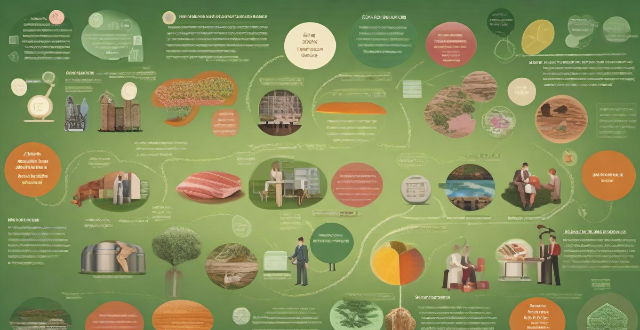
What policies can be implemented to reduce the number of climate refugees in the future ?
Policies to reduce the number of climate refugees in the future include investment in renewable energy, afforestation and reforestation, sustainable agriculture practices, coastal protection measures, and international cooperation and funding. These policies aim to mitigate the effects of climate change and prevent displacement of people due to climate change-related events.
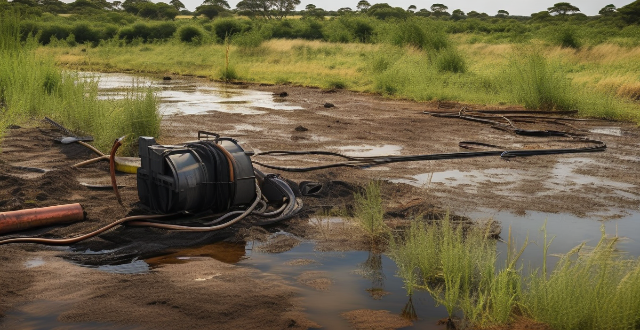
What are the primary causes of water pollution and how can they be mitigated ?
The primary causes of water pollution include industrial waste discharge, agricultural runoff, sewage and wastewater disposal, urban runoff, mining activities, and oil spills. To mitigate these causes, strategies such as stricter effluent standards, cleaner production methods, sustainable agriculture practices, improved sewage treatment, urban runoff control, responsible mining practices, and oil spill prevention and response should be implemented.

Can climate data analysis provide solutions to climate change problems ?
Climate data analysis is crucial for understanding climate change, predicting future scenarios, and developing solutions to mitigate its impact. It helps identify trends in temperature, precipitation, and other variables, predict changes in sea levels, extreme weather events, and ecosystem shifts. Solutions derived from this analysis include transitioning to renewable energy, improving energy efficiency, promoting sustainable forestry and agriculture, and international cooperation on climate action.